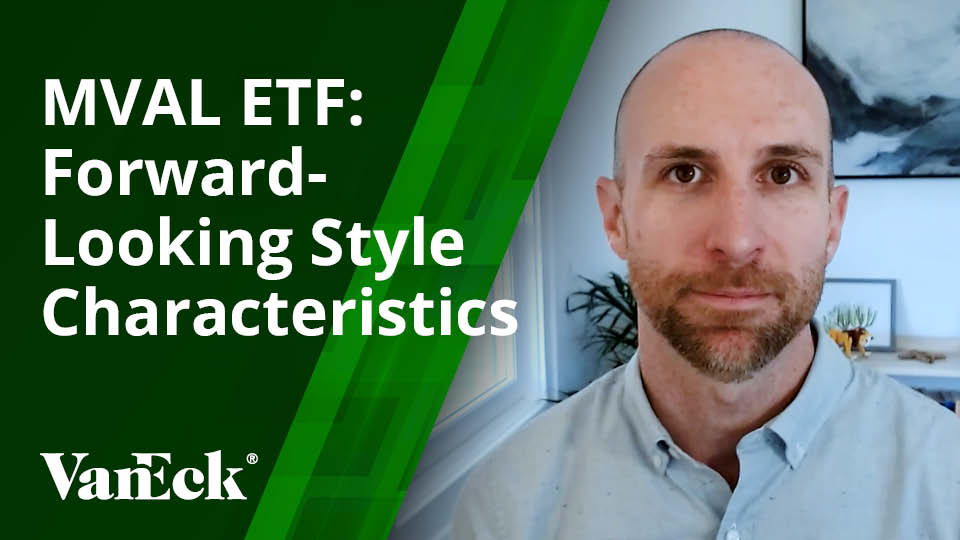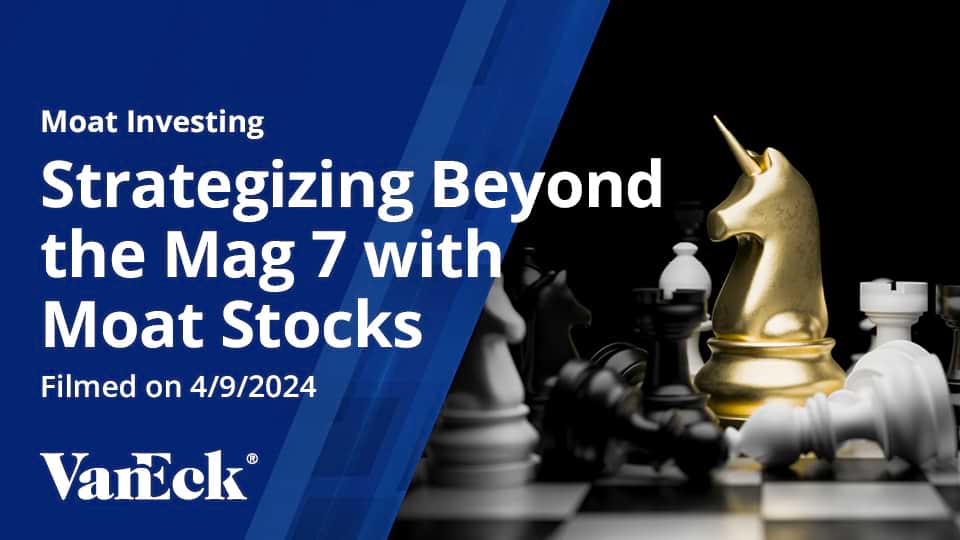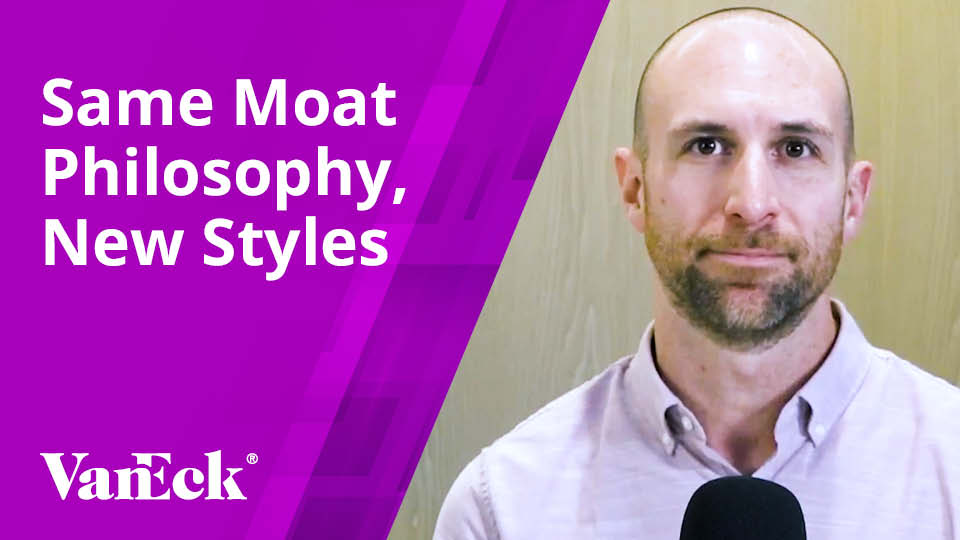Moat Index Shifts Away from Big Tech
July 15, 2020
Read Time 5 MIN
Morningstar Strategist Andrew Lane and I hosted our quarterly moat investing webinar on July 8,2020 and took the opportunity to highlight recent performance drivers of the Morningstar® Wide Moat Focus IndexSM (the“Index”) and long-term performance trends. We also reviewed the state of the Index’s current portfolio as it has shifted further away from some of the largest drivers of U.S. market performance in recent weeks. Here are some key takeaways from our discussion.
Moat Index Outperformance Despite FAANG Underweight
Many market commentators have been quick to focus on how FAANG (Facebook, Apple, Amazon, Netflix, and Google) stocks have accounted for an outsized portion of U.S. market returns in recent years. However, the Index has outperformed the S&P 500 Index through June 30, 2020 in many trailing periods including the 1-, 3-, and 5-year timeframes, despite its underweight to FAANGs.
The Index’s underlying methodology limits its possible FAANG exposure in two ways. First, only companies with a wide economic moat rating—meaning, their competitive advantages are expected to last over 20 years, according to Morningstar—are eligible for inclusion in the index. Apple and Netflix currently carry a narrow economic moat rating, rendering them ineligible for inclusion. Morningstar’s conviction in the long-term sustainability of Apple’s and Netflix’s competitive advantages is not strong enough to warrant a wide moat rating. Both operate in rapidly changing areas of the market (consumer electronics and streaming entertainment, respectively), which makes it difficult for Morningstar’s analysts to assign a wide moat rating, despite the strength of either company’s current advantages. Second, positions within the Index’s sub-portfolios are equally weighted. In practice this limits each eligible FAANG stock to a maximum exposure of approximately 2.5% before the potential effects of market appreciation.
Further, as we saw from the Index’s June review, valuations also have a limiting effect on FAANG exposure. Both Facebook’s and Amazon’s positions were scaled back in June as the stocks became overvalued relative to other wide moat companies in the U.S.
Under-FAANGed, Outperformed
Trailing Return (%) as of 6/30/2020
| 3 Month | 1 Year | 3 Year | 5 Year | |
| Morningstar® Wide Moat Focus IndexSM | 19.34 | 10.49 | 11.78 | 13.48 |
| S&P 500 Index | 20.54 | 7.51 | 10.73 | 10.73 |
| Morningstar US Fund Large Blend Category Average | 19.42 | 3.65 | 8.11 | 8.05 |
Source: Morningstar. Past performance is no guarantee of future results. Index performance is not illustrative of fund performance. For fund performance current to the most recent month-end, visit vaneck.com.
Moat Index Performance Following Down Markets
Andrew Lane highlighted a recently published Morningstar paper that analyzed the performance of the Index following periods of market volatility. It shows that the Index has, on average, outperformed the broad U.S. stock market in the 1- and 3-year periods following months in which the S&P 500 Index posts significantly negative returns.
What’s more, the Index has on average outperformed the market in 1- and 3-year periods following a month with any return profile. This further hammers home what we’ve discussed many times on this blog: the Morningstar Wide Moat Focus Index is built for the long term. It is a strategy that does not have to be timed in order to participate in its long-term potential. The Index can exploit valuation opportunities in any market to assemble a portfolio of competitively advantaged, attractively valued stocks, according to Morningstar.
Frequently Asked Questions About Moat Investing
We also received some great questions during the webinar from attendees, many of which aligned with common questions we receive from investors and advisors. Here are a few:
1. Is it too early to shift from tech?
The Morningstar Wide Moat Focus Index is a rules-based index that leverages the economic moat ratings and valuation assessments of Morningstar’s equity research group. It uses a repeatable, systematic approach to allocate to those wide moat companies trading at attractive valuations. Therefore, sector over- and underweights are a product of relative valuations in the eligible wide moat universe as opposed to active “bets.”
The underweight to tech stocks is not new. As you may recall, the Index was underweight tech throughout 2018 because many Morningstar analysts viewed the large, mega-cap tech companies as overvalued. This underweight proved beneficial as tech took a sharp turn lower in the fourth quarter of 2018 and the Index outperformed the market in the end of year sell-off.
Moreover, the Index’s systematic approach allowed it to allocate to several tech company that finished the year undervalued according to Morningstar analysts. Many of those allocations drove impressive relative Index performance in 2019.
2. How does financial leverage impact Morningstar economic moat ratings?
A company’s debt/equity ratio1 is a common input to many investment strategies seeking to exploit the quality factor. It is a backward-looking metric that, along with other inputs, helps paint a picture of how financially sound a company has operated. Morningstar’s economic moat ratings are different. They assess whether a company can sustain its advantage(s) well into the future to allow for long-term profitability. It is a forward-looking assessment.
Financial leverage is, in fact, considered in Morningstar’s economic moat rating process. In order to obtain a favorable rating, a company must not be likely to cause material value destruction for equity shareholders. In other words, the hurdle to receive a wide moat rating is higher for companies with increased operating or financial leverage.
3. Innovation has shortened the life of many great companies, how does that impact Morningstar’s long-term forward-looking moat rating assessment?
It is often hard to believe that Morningstar analysts can develop such strong conviction in a company’s competitive position that they are willing to assign a rating linked to a 20+ year timeframe. Technological change impacts companies well beyond the information technology sector. Therefore, it is critical that Morningstar analysts are diligent in their moat rating assessment.
In tech, the classic example of a highly regarded company lacking a wide moat rating is Apple (AAPL). Apple is a top holding of many active and passive investment strategies and has seen its market value increase regularly over the years. As discussed earlier, Apple operates in a difficult-to-predict market segment, consumer electronics. Therefore, the conviction necessary to assert a 20+ year advantage is lacking, resulting in one of the largest companies in the world receiving a narrow moat rating from Morningstar.
A great example of innovation outside of tech was the unconventional energy transformation in the U.S. The development of technology to extract previously untapped oil and gas dramatically affected the commodity cost curve, which subsequently impacted the energy markets as a whole. Morningstar would admit that they wish they were quicker to reflect this innovation in their energy company ratings, but the importance of forecasting innovation or rapidly reflecting it in their research has been reinforced by trends like this one.
VanEck Vectors Morningstar Wide ETF (MOAT) seeks to replicate as closely as possible, before fees and expenses the price and yield performance of the Morningstar Wide Moat Focus Index.
Related Insights
April 10, 2024
Important Disclosures
1Debt/equity ratio is used to evaluate a company’s financial leverage and is calculated by dividing a company’s total liabilities by its shareholder equity.
The information presented does not involve the rendering of personalized investment, financial, legal, or tax advice. Certain statements contained herein may constitute projections, forecasts and other forward looking statements, which do not reflect actual results, are valid as of the date of this communication and subject to change without notice. Information provided by third party sources are believed to be reliable and have not been independently verified for accuracy or completeness and cannot be guaranteed. The information herein represents the opinion of the author(s), but not necessarily those of VanEck.
This commentary is not intended as a recommendation to buy or to sell any of the sectors or securities mentioned herein. Holdings will vary for the MOAT ETF and its corresponding Index. For a complete list of holdings in the ETF, please click here: https://www.vaneck.com/etf/equity/moat/holdings/.
An investor cannot invest directly in an index. Returns reflect past performance and do not guarantee future results. Results reflect the reinvestment of dividends and capital gains, if any. Certain indices may take into account withholding taxes. Index returns do not represent Fund returns. The Index does not charge management fees or brokerage expenses, nor does the Index lend securities, and no revenues from securities lending were added to the performance shown.
Fair value estimate: the Morningstar analyst's estimate of what a stock is worth.
Price/Fair Value: ratio of a stock's trading price to its fair value estimate.
The Morningstar® Wide Moat Focus IndexSM was created and is maintained by Morningstar, Inc. Morningstar, Inc. does not sponsor, endorse, issue, sell, or promote the VanEck Vectors Morningstar Wide Moat ETF and bears no liability with respect to that ETF or any security. Morningstar® is a registered trademark of Morningstar, Inc. Morningstar® Wide Moat Focus IndexSM is a service mark of Morningstar, Inc.
The Morningstar® Wide Moat Focus IndexSM consists of U.S. companies identified as having sustainable, competitive advantages and whose stocks are attractively priced, according to Morningstar.
Effective June 20, 2016, Morningstar implemented several changes to the Morningstar Wide Moat Focus Index construction rules. Among other changes, the index increased its constituent count from 20 stocks to at least 40 stocks and modified its rebalance and reconstitution methodology. These changes may result in more diversified exposure, lower turnover and longer holding periods for index constituents than under the rules in effect prior to this date.
The S&P 500® Index is a product of S&P Dow Jones Indices LLC and/or its affiliates and has been licensed for use by Van Eck Associates Corporation. Copyright ©2020 S&P Dow Jones Indices LLC, a division of S&P Global, Inc., and/or its affiliates. All rights reserved. Redistribution or reproduction in whole or in part are prohibited without written permission of S&P Dow Jones Indices LLC. For more information on any of S&P Dow Jones Indices LLC’s indices please visit www.spdji.com. S&P® is a registered trademark of S&P Global and Dow Jones® is a registered trademark of Dow Jones Trademark Holdings LLC. Neither S&P Dow Jones Indices LLC, Dow Jones Trademark Holdings LLC, their affiliates nor their third party licensors make any representation or warranty, express or implied, as to the ability of any index to accurately represent the asset class or market sector that it purports to represent and neither S&P Dow Jones Indices LLC, Dow Jones Trademark Holdings LLC, their affiliates nor their third party licensors shall have any liability for any errors, omissions, or interruptions of any index or the data included therein.
An investment in the VanEck Vectors Morningstar Wide Moat ETF (MOAT®) may be subject to risks which include, among others, investing in equity securities, consumer discretionary, financials, health care, industrials and information technology sectors, medium-capitalization companies, market, operational, index tracking, authorized participant concentration, no guarantee of active trading market, trading issues, passive management, fund shares trading, premium/discount risk and liquidity of fund shares, non-diversified, and concentration risks, which may make these investments volatile in price or difficult to trade. Medium-capitalization companies may be subject to elevated risks.
Investing involves substantial risk and high volatility, including possible loss of principal. An investor should consider a Fund's investment objective, risks, charges and expenses carefully before investing. To obtain a prospectus and summary prospectus for VanEck Funds and VanEck Vectors ETFs, which contain this and other information, call 800.826.2333 or visit vaneck.com. Please read the prospectus and summary prospectus for VanEck Funds and VanEck Vectors ETFs carefully before investing.
Related Funds
Important Disclosures
1Debt/equity ratio is used to evaluate a company’s financial leverage and is calculated by dividing a company’s total liabilities by its shareholder equity.
The information presented does not involve the rendering of personalized investment, financial, legal, or tax advice. Certain statements contained herein may constitute projections, forecasts and other forward looking statements, which do not reflect actual results, are valid as of the date of this communication and subject to change without notice. Information provided by third party sources are believed to be reliable and have not been independently verified for accuracy or completeness and cannot be guaranteed. The information herein represents the opinion of the author(s), but not necessarily those of VanEck.
This commentary is not intended as a recommendation to buy or to sell any of the sectors or securities mentioned herein. Holdings will vary for the MOAT ETF and its corresponding Index. For a complete list of holdings in the ETF, please click here: https://www.vaneck.com/etf/equity/moat/holdings/.
An investor cannot invest directly in an index. Returns reflect past performance and do not guarantee future results. Results reflect the reinvestment of dividends and capital gains, if any. Certain indices may take into account withholding taxes. Index returns do not represent Fund returns. The Index does not charge management fees or brokerage expenses, nor does the Index lend securities, and no revenues from securities lending were added to the performance shown.
Fair value estimate: the Morningstar analyst's estimate of what a stock is worth.
Price/Fair Value: ratio of a stock's trading price to its fair value estimate.
The Morningstar® Wide Moat Focus IndexSM was created and is maintained by Morningstar, Inc. Morningstar, Inc. does not sponsor, endorse, issue, sell, or promote the VanEck Vectors Morningstar Wide Moat ETF and bears no liability with respect to that ETF or any security. Morningstar® is a registered trademark of Morningstar, Inc. Morningstar® Wide Moat Focus IndexSM is a service mark of Morningstar, Inc.
The Morningstar® Wide Moat Focus IndexSM consists of U.S. companies identified as having sustainable, competitive advantages and whose stocks are attractively priced, according to Morningstar.
Effective June 20, 2016, Morningstar implemented several changes to the Morningstar Wide Moat Focus Index construction rules. Among other changes, the index increased its constituent count from 20 stocks to at least 40 stocks and modified its rebalance and reconstitution methodology. These changes may result in more diversified exposure, lower turnover and longer holding periods for index constituents than under the rules in effect prior to this date.
The S&P 500® Index is a product of S&P Dow Jones Indices LLC and/or its affiliates and has been licensed for use by Van Eck Associates Corporation. Copyright ©2020 S&P Dow Jones Indices LLC, a division of S&P Global, Inc., and/or its affiliates. All rights reserved. Redistribution or reproduction in whole or in part are prohibited without written permission of S&P Dow Jones Indices LLC. For more information on any of S&P Dow Jones Indices LLC’s indices please visit www.spdji.com. S&P® is a registered trademark of S&P Global and Dow Jones® is a registered trademark of Dow Jones Trademark Holdings LLC. Neither S&P Dow Jones Indices LLC, Dow Jones Trademark Holdings LLC, their affiliates nor their third party licensors make any representation or warranty, express or implied, as to the ability of any index to accurately represent the asset class or market sector that it purports to represent and neither S&P Dow Jones Indices LLC, Dow Jones Trademark Holdings LLC, their affiliates nor their third party licensors shall have any liability for any errors, omissions, or interruptions of any index or the data included therein.
An investment in the VanEck Vectors Morningstar Wide Moat ETF (MOAT®) may be subject to risks which include, among others, investing in equity securities, consumer discretionary, financials, health care, industrials and information technology sectors, medium-capitalization companies, market, operational, index tracking, authorized participant concentration, no guarantee of active trading market, trading issues, passive management, fund shares trading, premium/discount risk and liquidity of fund shares, non-diversified, and concentration risks, which may make these investments volatile in price or difficult to trade. Medium-capitalization companies may be subject to elevated risks.
Investing involves substantial risk and high volatility, including possible loss of principal. An investor should consider a Fund's investment objective, risks, charges and expenses carefully before investing. To obtain a prospectus and summary prospectus for VanEck Funds and VanEck Vectors ETFs, which contain this and other information, call 800.826.2333 or visit vaneck.com. Please read the prospectus and summary prospectus for VanEck Funds and VanEck Vectors ETFs carefully before investing.


